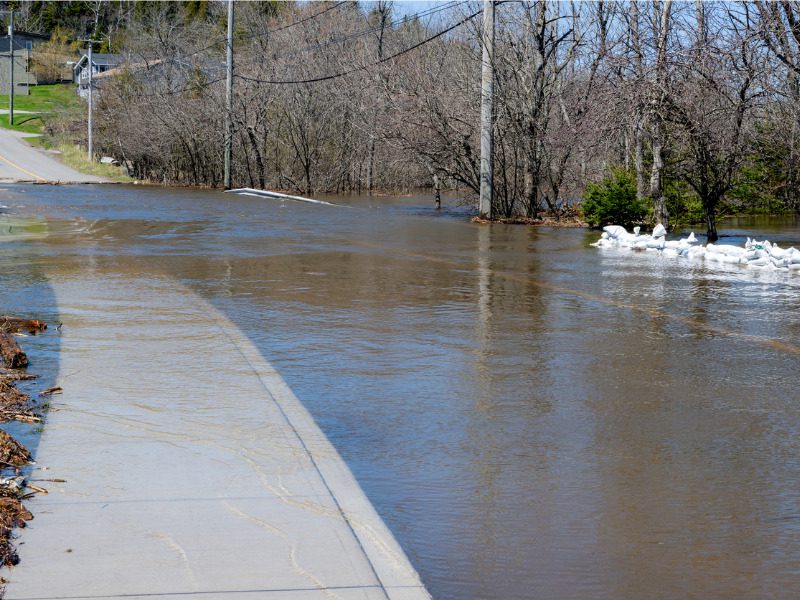Government caps disaster assistance, lowers threshold for property buyouts

Another provincial government is changing the way it provides disaster financial assistance by capping assistance for claims related to the same type of disaster at $200,000.
New Brunswick is increasing the maximum payout for structural damage to $200,000, setting a cap on the amount of assistance paid on any property for the same type of disaster (flooding, coastal storm surge, etc.), and lowering the threshold for buyouts for those affected by floods.
“Three changes are being made to help people leave areas prone to flooding and encourage property owners to manage their own risks,” New Brunswick’s Department of Justice and Public Safety said in a press release Wednesday announcing the changes.
Until now, the maximum a homeowner could file for assistance was $160,000 per incident causing structural damage. This limit has been increased and capped at $200,000 for private homes.
“If a property is damaged three times by overland flooding, for example, and the property owner makes claims of $60,000, $60,000, and $80,000, the property owner can no longer make another claim related to overland flooding,” the government explained.
Once the $200,000 limit has been reached, a notice will be placed on the provincial government’s land registry, stating the property is no longer eligible for the government’s disaster financial assistance funding for inland or coastal flooding.
As well, previously, for a homeowner to be offered a buyout, damage had to be 80% of the property’s fair market value. For example, a $200,000 property would need to have sustained $160,000 worth of structural damage. For future disasters, the threshold has changed to 50% from one event, or 80% accumulated across multiple disasters, such as flooding.
iStock.com/Greenseas
The changes address the financial implications of more frequent and larger-scale events, the government said. New Brunswick Public Safety Minister Kris Austin said over the past nine years, there have been 12 events in the province that prompted the need for disaster financial assistance. “Over that span, New Brunswick has sustained an estimated total of $369 million in damage.”
Disaster assistance is designed to provide aid after disasters for which insurance is not available at all, hard to find and/or too costly, explained Glenn McGillivray, managing director of the Institute for Catastrophic Loss Reduction (ICLR).
In Atlantic Canada, the costliest weather event from an insurance perspective was post-tropical storm Fiona in September 2022 at $800 million — although insured damages in New Brunswick were only a fraction of that at more than $30 million. It’s not clear how much the provincial government paid out in disaster assistance.
McGillivray noted New Brunswick is not the first province to make such changes to its disaster assistance program. Quebec made a similar move recently, also capping the lifetime payment for certain types of losses (mostly flood-related). Alberta also made changes where local governments are billed back a small percentage of the disaster, giving them some ‘skin in the game’ for the first time, McGillivray reported.
“It is up to each province and territory to decide whether they should make similar changes, but I think we will see more such reforms going forward,” he said.
Overall, New Brunswick’s changes make a lot of sense, McGillivray said. “New Brunswick is attempting to incentivize the right decision by homeowners to relocate, which is often the best option when it comes to recurrent flooding.”
There is a certain amount of moral hazard created when governments provide disaster assistance to property owners, McGillivray said. But between the relative rarity of a flood loss for any specific property and payouts available when one does happen, property owners often decide to stay put.
“If you look at the National Flood Insurance Program in the United States, there are instances of flood claims being paid out for specific properties three, five, ten times and more,” he said. “This is folly and provides for huge moral hazard.”
Feature image by iStock.com/madsci



